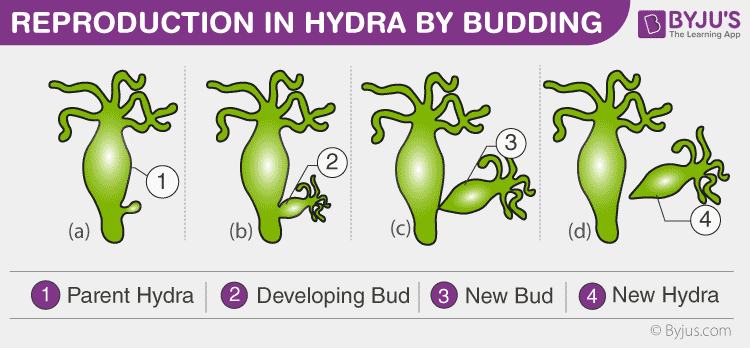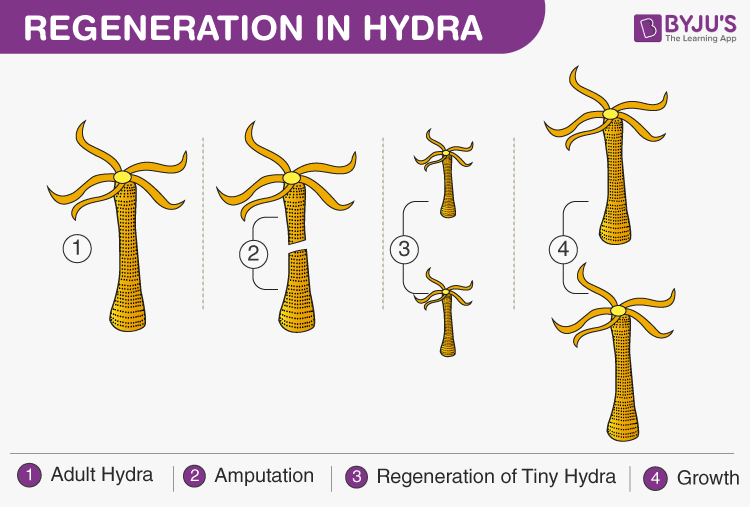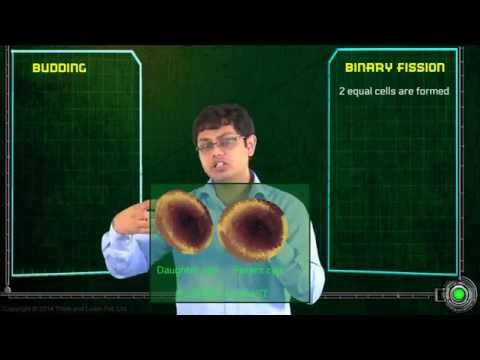Asexual Reproduction Definition
“Asexual reproduction is the process of producing new individuals from a single organism without the fusion of gametes.”
What is Asexual Reproduction?
Asexual reproduction is the production of new individuals from a single parent. This type of reproduction is generally observed in single-celled organisms. Here no fusion of gametes is involved and a single parent divides into two or more daughter cells. The offsprings produced are genetically and physically identical to the parent and are known as clones.
Features of Asexual Reproduction
Following are the important features of asexual reproduction:
- No formation of gametes or fertilization takes place.
- Only one parent is involved.
- The process occurs in very less time.
- The offsprings produced are exact copies of the parent, there is no variation.
- The growth of the offspring is rapid.
Also Read: Reproduction
Asexual Reproduction Examples
Asexual reproduction takes place in different ways. The different asexual reproduction examples include:
Binary Fission

In this type of reproduction, parent cell divides into two equal parts each containing a nucleus. These are called daughter cells. The daughter cells are genetically and physically similar to the parent cell. This type of asexual reproduction can be seen in organisms such as amoeba, bacteria, euglena, etc.
Budding

Budding is another method of asexual reproduction where a new organism develops from an outgrowth from the parent body known as a bud. These derive nutrition from the parent for growth and development. Once grown, the new organism detaches from the parent body. This process is called budding. This types of reproduction can be seen in Hydra.
Fragmentation
This type of asexual reproduction is exhibited by Planaria. In this, the parent body breaks into several pieces where each piece grows into a new individual. The detachment of the body parts is intentional.
Regeneration
In this, if a part of the body of an organism is detached, the detached part grows into a completely new individual. Regeneration is observed in Echinoderms.

Also Read: Sexual Reproduction
Advantages and Disadvantages Of Asexual Reproduction
Following are some of the advantages and disadvantages of asexual reproduction:
| Advantages Of Asexual Reproduction | Disadvantages Of Asexual Reproduction |
| The process requires less energy. | Since the offspring is an exact copy of the parent, any negative mutation will also pass on to the offspring. |
| It takes place in various environments. | There is limited diversity within life forms. |
| It allows for the survival of species. | It is difficult to control the increasing population. |
| A single organism can develop a colony. | The organisms produced cannot adapt to the changing environments. |
| All the positive traits of the species are transferred to future generations. | There is a huge competition for food and space among the species. |
| The organisms mature rapidly. | They have short lifespans. |
This was a brief overview of asexual reproduction in animals.
Also Read: Asexual reproduction in plants
For more information on asexual reproduction in animals, its examples, advantages and disadvantages, keep visiting BYJU’S website or download BYJU’S app for further reference.

Frequently Asked Questions
Name the animals that reproduce asexually?
The animals that reproduce asexually include planarians, hydra, amoeba, a few annelids, etc.
What are the different ways of asexual reproduction in animals?
The different ways of asexual reproduction in animals include:
- Budding
- Fragmentation
- Fission
- Regeneration
Is asexual reproduction better than sexual reproduction?
Sexual reproduction is considered better than asexual reproduction. In asexual reproduction, the offspring is an exact copy of the parent since only one parent is involved in reproduction. Therefore, there is no variation in the organisms and they have fewer chances to adapt to different environments. On the contrary, sexual reproduction involves the genetic transfer to the offspring from both the parents. Hence there are variations in their genes and they can adapt to different environmental conditions.
Why is parthenogenesis considered to be a form of asexual reproduction?
Parthenogenesis is considered to be a form of asexual reproduction because the process does not require any male gametes for the production of the offspring. The embryos develop from unfertilized eggs. It can more accurately be termed as an “incomplete form of sexual reproduction.

Comments